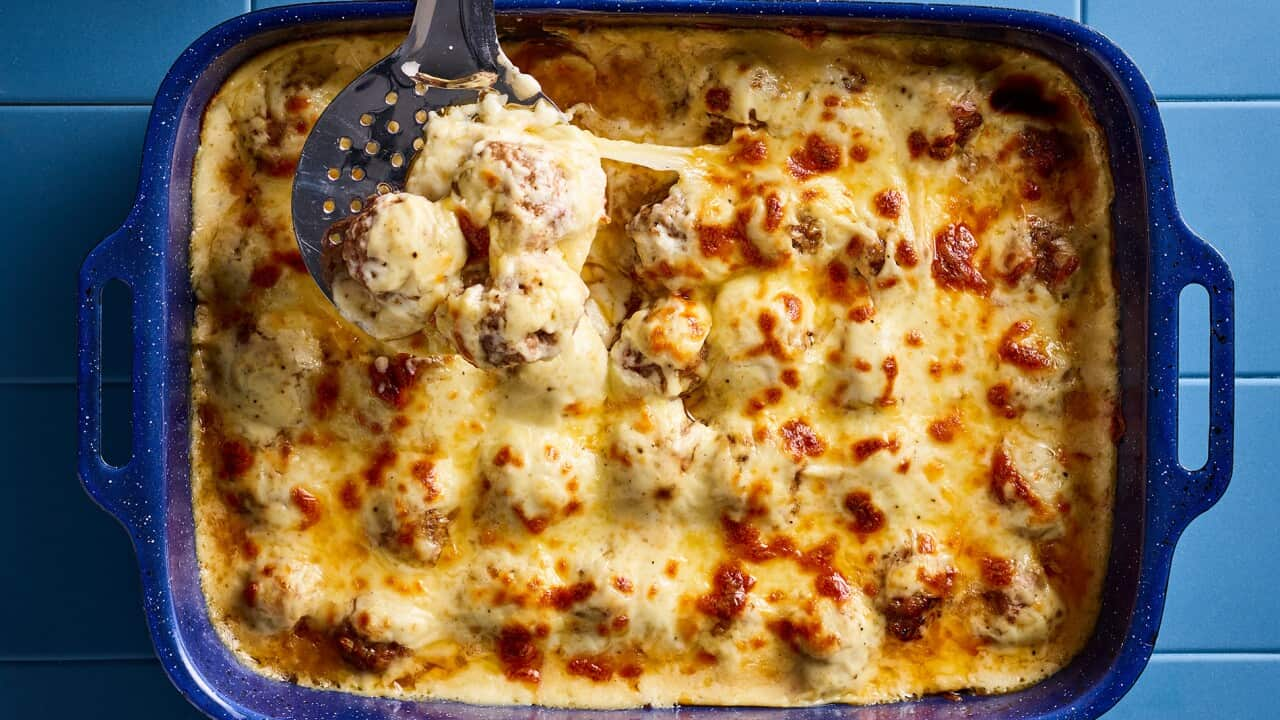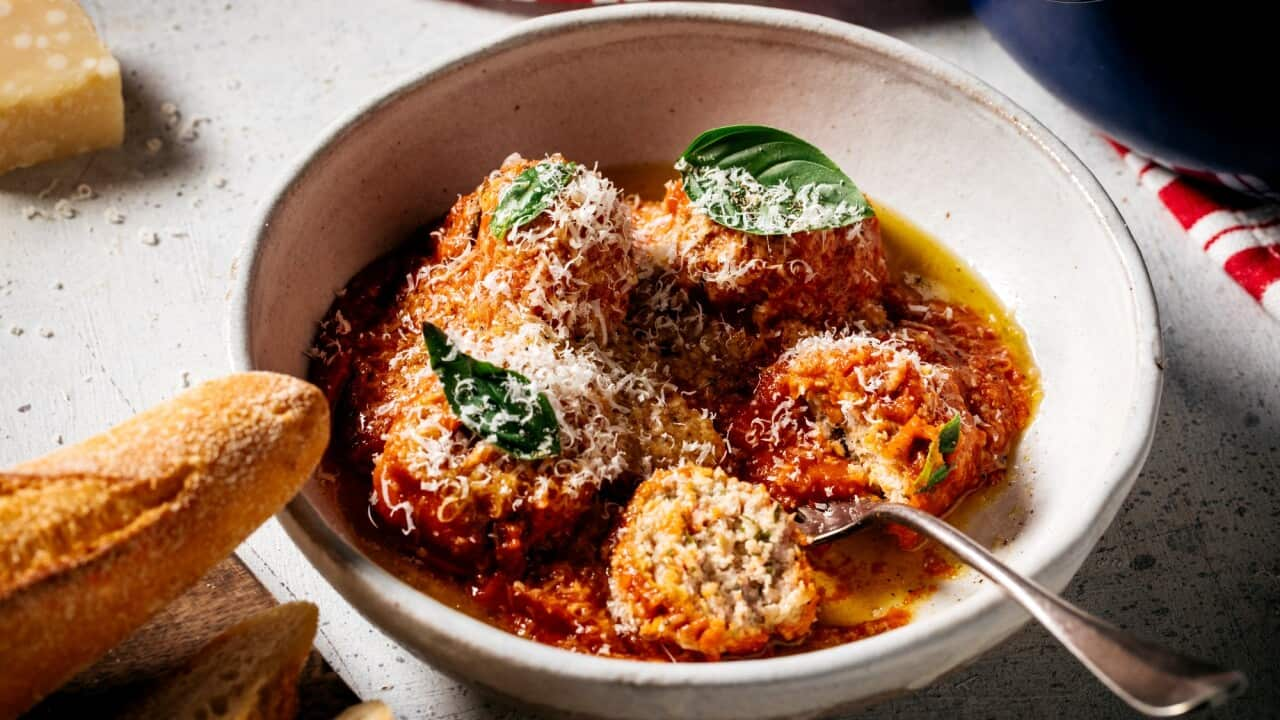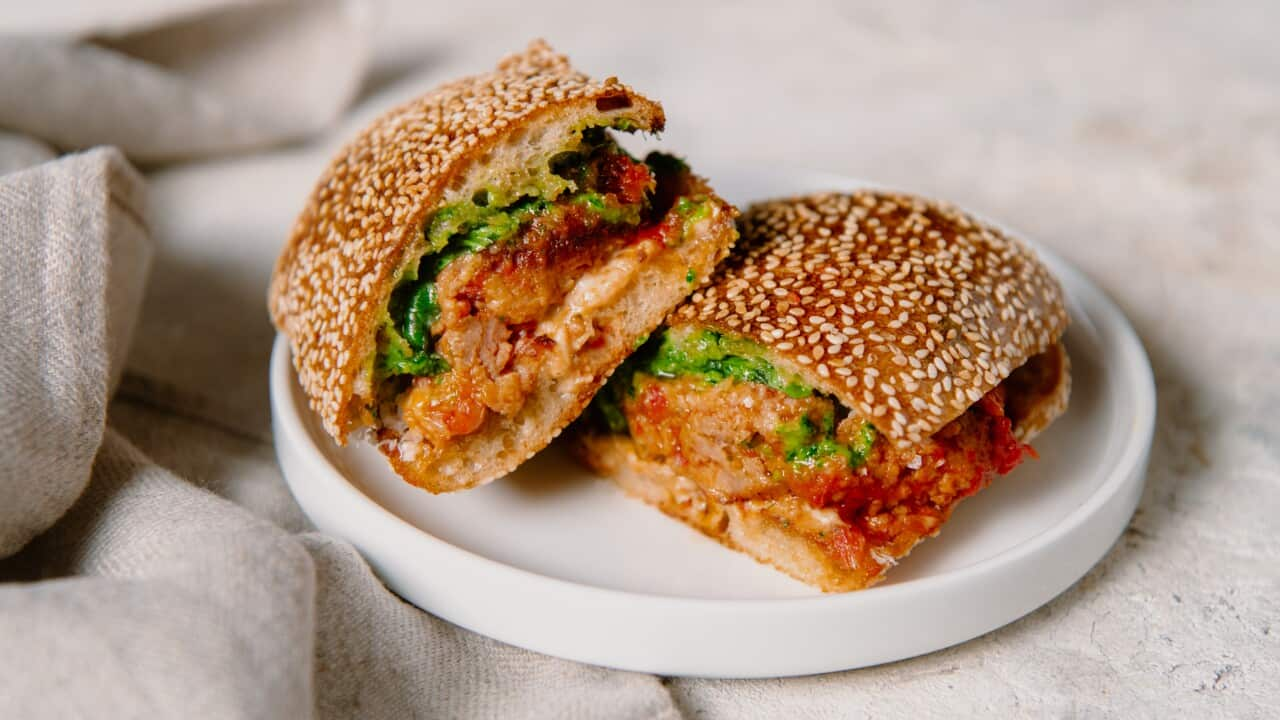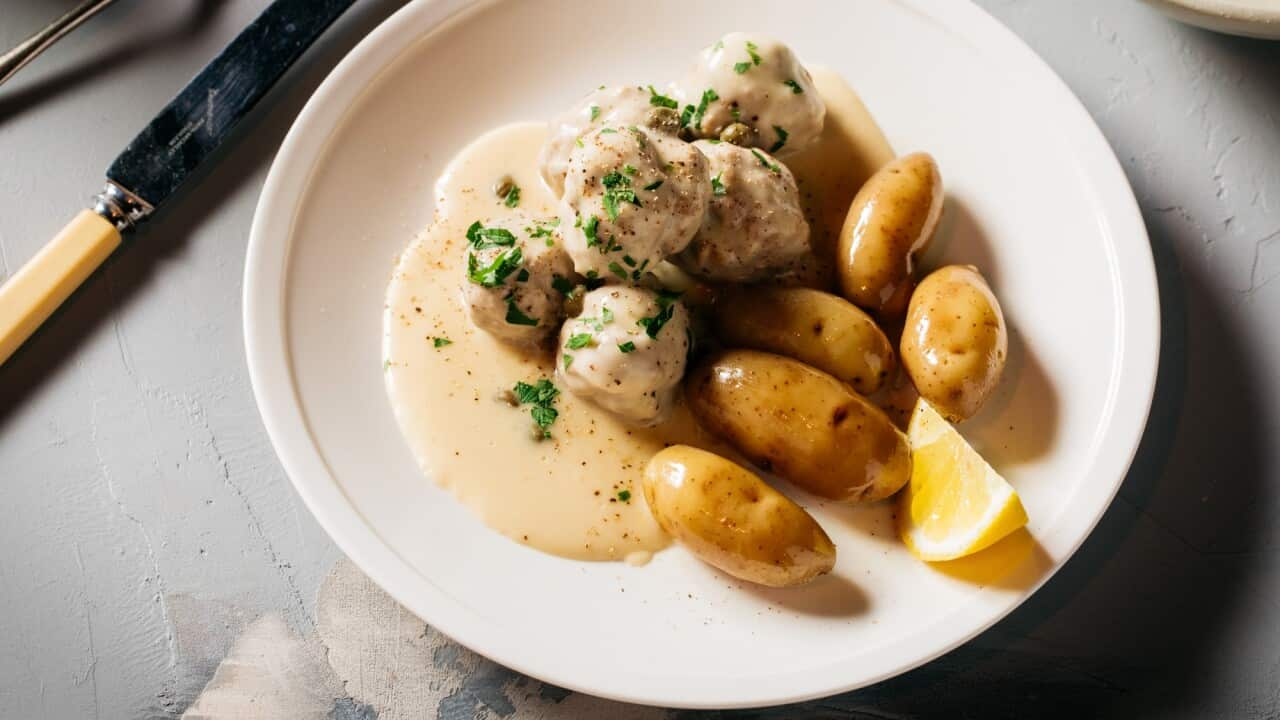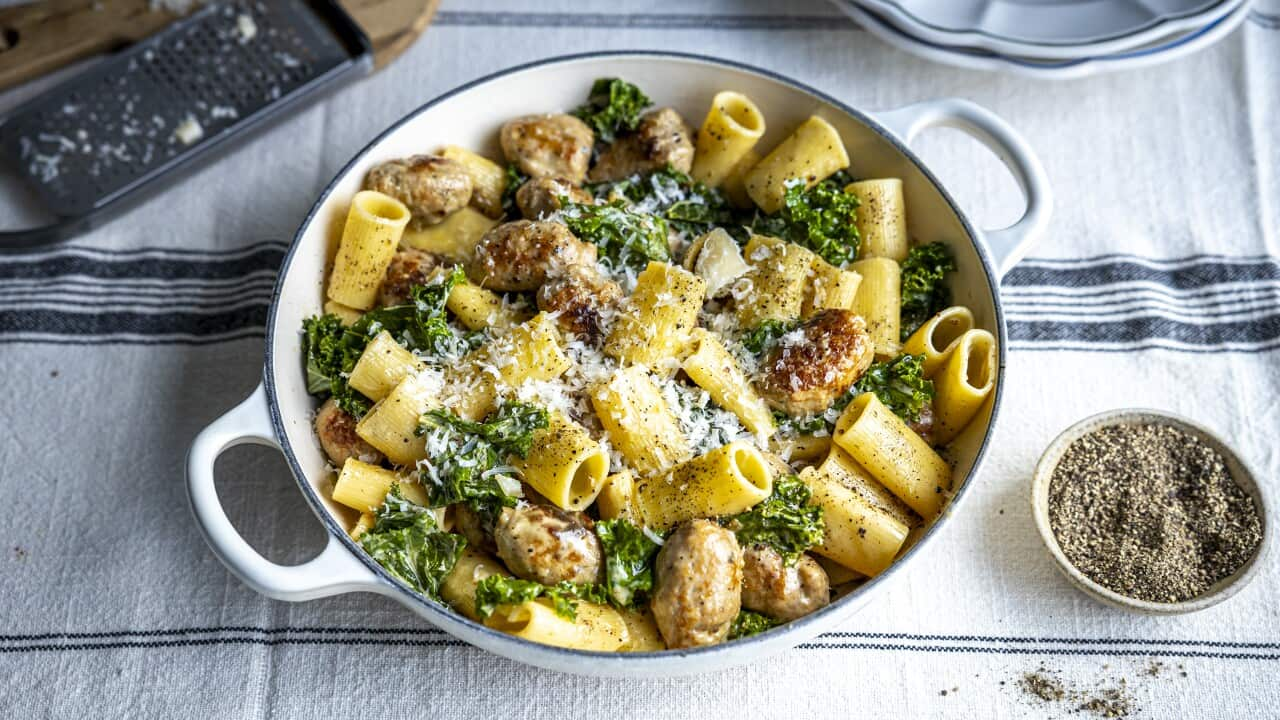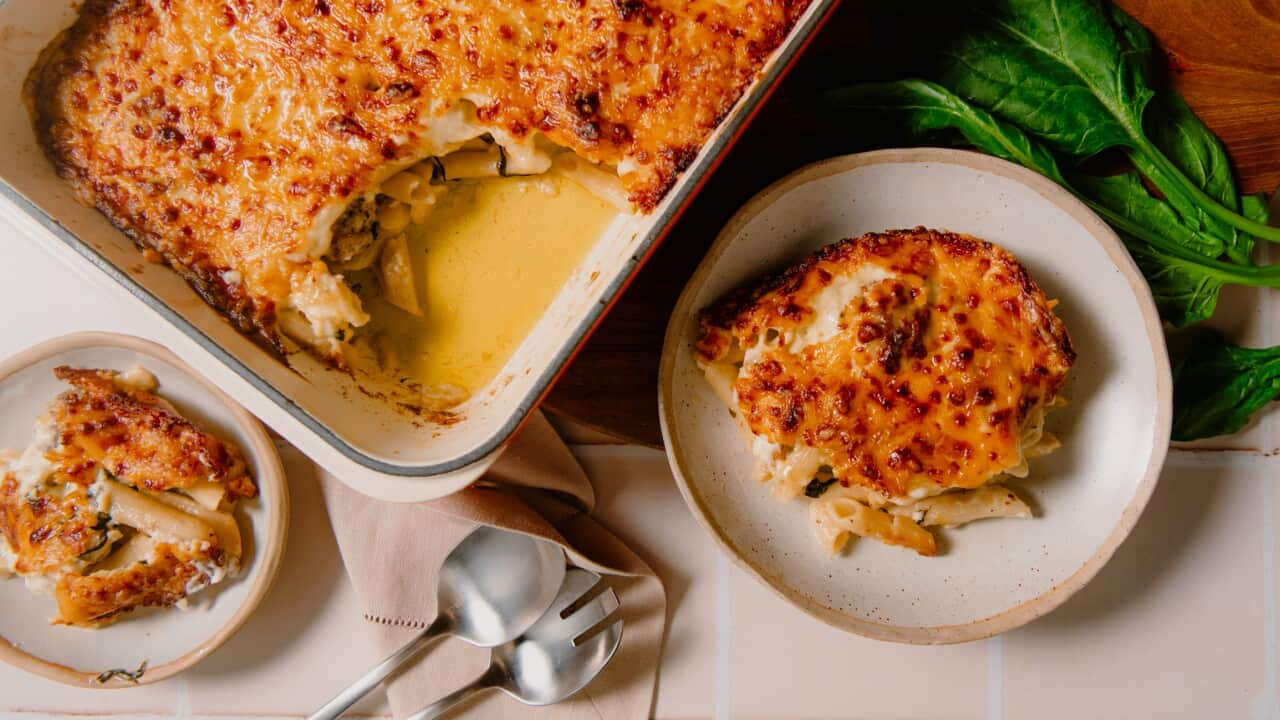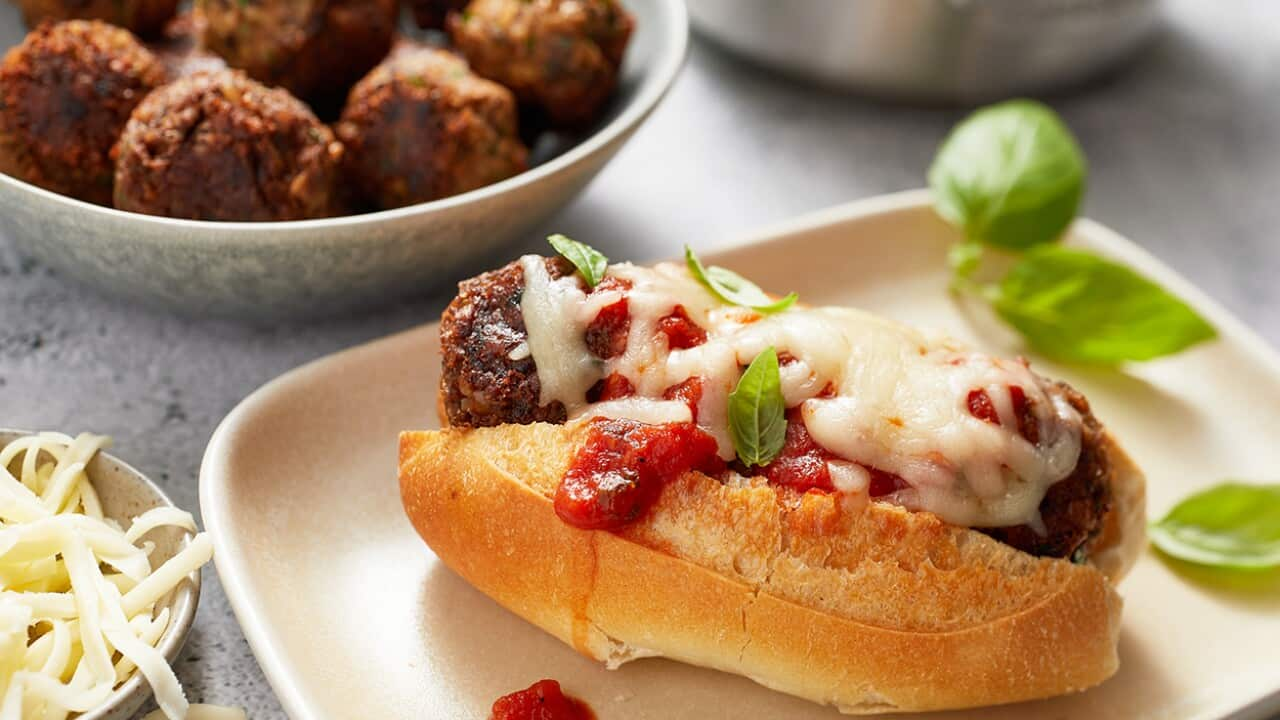The allure of meatballs is multidimensional. They don’t require the deft, precise hand of a highly skilled chef; any shovel-handed buffoon can roll a gob of mince into a rustic ball. Their application knows no bounds: how do we get vegetables into the mouths of children who have a one-line list of safe vegetables? In a meatball. What do we give our loved ones after a painful tooth extraction? Soft, nurturing meatballs. What do we cook when cost-of-living expenses bite? Thrifty, flavoursome meatballs. And if that’s not compelling enough evidence of their virtue, minced (ground) meat also helps to minimise food waste, as it utilises trimmings of meat that may otherwise be destined for the bin.
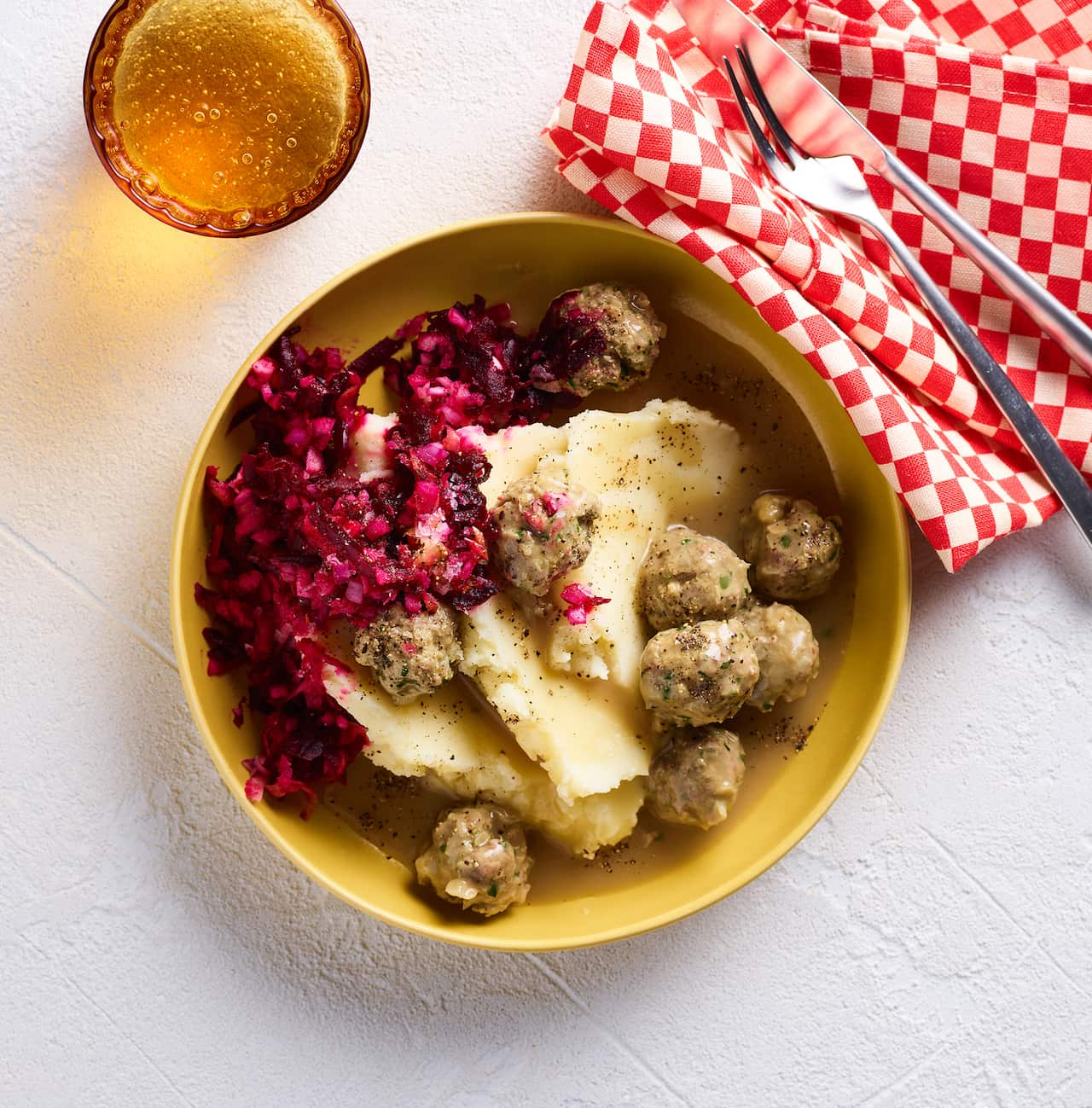
Pulpety with cold beet salad. Credit: Mark Roper / Hardie Grant Books
But, really, it’s their global ubiquity that gives meatballs their icon status. Every corner of the planet has its own adorable twist on the meatball. Many countries, in fact, have a multitude of regional variations; Türkiye is said to have in excess of 200 varieties. To my mind, nothing you can serve at a dinner table better represents the interconnectedness of us all than the universally recognised, universally adored meatball in all its countless guises.
A guide to getting the most out of your balls
- When shaping the meatballs, have a small bowl of water next to the mixture. Dip your hands in the water between balls, to avoid your hands becoming a sticky, unmanageable mess. You can also lightly oil your hands to achieve the same result. Gloves are a good idea if you’ve got longer nails, or don’t fancy a prolonged bout of handwashing post roll. You can also use an ice cream scoop, but hands are better.
- Using your hands to combine the meat mixture also produces a superior result, unless the recipe specifies using a food processor. Again, use gloves if you’re a bit squeamish about skin-to-meat contact.
- Refrigerating your meatball mix for an hour or so helps firm it up and makes for a more robust ball. Keeping your meat cool during prep is also important; some recipes even ask you to partially freeze the mince prior to cooking, as this stops the fat from melting and breaking down.
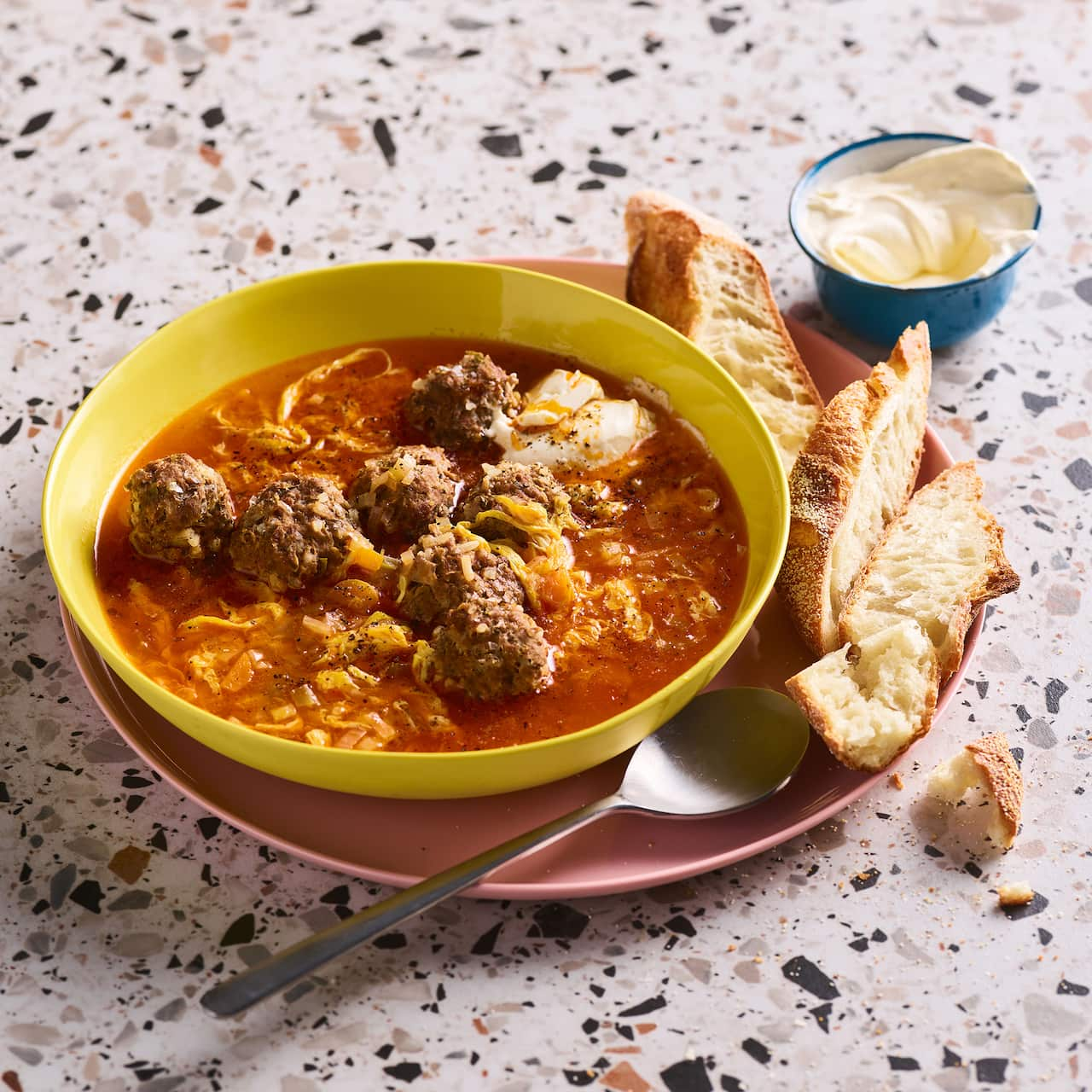
Ciorba de periosare (sour soup with meatballs). Credit: Mark Roper / Hardie Grant Books
- When a recipe calls for minced (ground) chicken, it’s best to go with thigh meat, or a mix of thigh and breast; breast alone results in a dry ball. There are very few of my recipes that specify a particular fat content in the meat because, let’s be honest, these are meatballs, not nuclear submarines; we don’t want to get bogged down in finicky sums. You can bet the nonnas, yiayias and omas of the world certainly don’t.
- In most cases, you can switch proteins if desired: substitute beef for lamb; pork for chicken or turkey.
- For vegetarian versions, you can substitute minced (ground) meat with any number of plant-based alternatives. It may require a little experimentation to find the right substitute for each recipe, and measurements may need adjusting to account for differences in texture and fat content. Textured vegetable protein (TVP) works well in recipes that call for beef. Tofu and shiitake mushroom mince is easy to make and works very well with Asian-leaning flavours.
With any recipe, you may want to make tweaks of your own – your version may become the beloved recipe passed down to future generations.
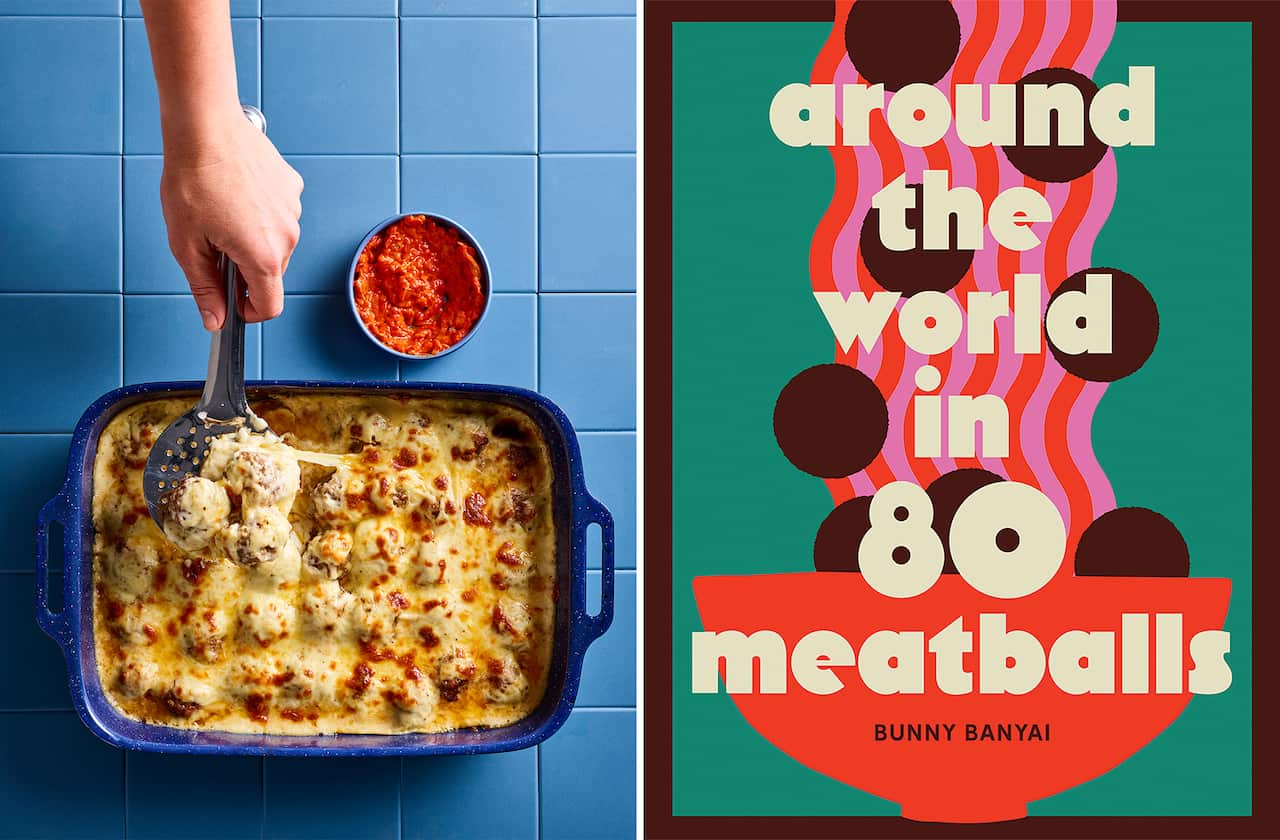
Credit: Hardie Grant Books
This is an edited extract from Around the World in 80 Meatballs by Bunny Banyai (Hardie Grant Books). Photography by Mark Roper. The book includes her recipe for ćulbastije, a marvellous meatball and mozzarella bake.
Share
SBS Food is a 24/7 foodie channel for all Australians, with a focus on simple, authentic and everyday food inspiration from cultures everywhere. NSW stream only. Read more about SBS Food
Have a story or comment? Contact Us

